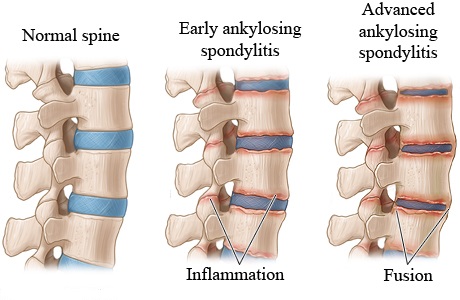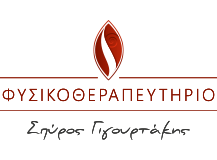
Σε αυτό το μέρος τονίζεται ακόμα περισσότερο η σπουδαιότητα ενός δομημένου και εξατομικευμένου προγράμματος άσκησης , καθώς και η αναγκαιότητα της υδροκινησιοθεραπείας.
In the second and final part of a series of articles on spondyloarthritis, consultant physiotherapist Carol McCrum highlights the value of specialist and aquatic physiotherapy. In its recently-released guideline, the National Institute for Health and Care Excellence (NICE) recognised the value of specialist physiotherapy and aquatic physiotherapy in managing people with spondyloarthritis.
Spondyloarthritis encompasses a group of inflammatory conditions, which includes ankylosing spondylitis and axial spondyloarthritis, often with associated conditions such as psoriasis, uveitis and inflammatory bowel disease. The NICE guideline provides screening criteria to help earlier recognition of spondyloarthritis and onward referral. NICE also recommends referring patients to a specialist physiotherapist to start an individualised, structured exercise programme.
This programme should include:
- stretching, strengthening and postural exercises
- deep breathing
- spinal extension
- range of motion exercises for the lumbar, thoracic and cervical sections of the spine
- aerobic exercise
Karen Kenyon, the specialist physiotherapist who leads the spondyloarthritis physiotherapy team at East Sussex Healthcare NHS Trust, is delighted that NICE has recognised the role of physiotherapy. ‘The recommendation is particularly important in ensuring that people with ankylosing spondylitis and axial spondyloarthritis have access to specialist care after diagnosis, especially concerning long-term management, to help reduce the disabling impact often experienced. The recommendation also provides a standard of care that can underpin a business case to commissioners for a service to which all people with these conditions should have access.
Valuable resources for clinicians are offered by the National Ankylosing Spondylitis Society (nass.co.uk) and AStretch (www.astretch.co.uk), a group of physiotherapists with a special interest and specialist expertise in providing education and support to physiotherapists working with people who have ankylosing spondylitis and axial spondyloarthritis.
The guideline also recommends that referral to aquatic physiotherapy should be considered for people with axial spondyloarthritis. Jacqueline Pattman, chair of the Aquatic Therapy Association of Chartered Physiotherapists (ATACP), said: ‘The ATACP welcomes the NICE guideline’s recognition and recommendation of aquatic therapy as an adjunct therapy to manage pain and improve function for patients with axial spondyloarthritis.
Ms Pattman added: ’The importance of maintaining function, managing pain and preventing disease progression warrants the support of specialist aquatic and physical therapy. The ATACP is committed to supporting evidence in clinical practice, engaging in future research opportunities and promoting of aquatic therapy.
NICE also advises that referral to a specialist therapist (such as a physiotherapist, occupational therapist, hand therapist, orthotist or podiatrist) should be considered for people with spondyloarthritis who have difficulties with everyday activities, including at work.
The specialist therapist should:
- assess people’s needs
- provide advice about physical aids
- arrange periodic reviews to assess people’s changing needs
Research recommendations Importantly for the profession, the NICE guideline highlights the need for further research into physiotherapy and aquatic therapy in these conditions.The evidence review found little high-quality research to support the benefits that are perceived by both physiotherapists and the people with spondyloarthritis who receive care.
The guidance made several research recommendations. These included the need to evaluate the long-term effectiveness and cost-effectiveness of manual therapy as an intervention (without other concurrent physiotherapy). Elsewhere, topics such as the effectiveness of structured exercise programmes compared to usual care, and the effectiveness and cost-effectiveness of different care delivery strategies are examined.
Another topic that could be researched is the short and long-term effectiveness, and cost-effectiveness, of aquatic physiotherapy (including whether there is a difference between delivering treatment delivered in a hydrotherapy pool compared to a standard swimming pool), the guideline suggests.
For more information:
NICE guideline on spondyloarthritis for 16s and over (2017) recommendations
Διαβάστε το άρθρο εδώ: http://www.csp.org.uk/frontline/article/clinical-update-cpd-spondyloarthritis-part-2
To see part 1 of this two-part series, visit http://www.csp.org.uk/node/1065502

